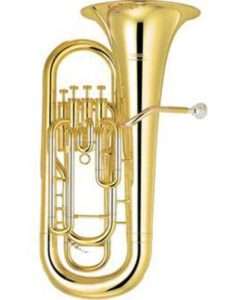Degrees of relationship between tonalities: in music everything is like in mathematics!
Contents
The subject of classical harmony necessitates a deep consideration of the relationships between different tonalities. This relationship is, first of all, carried out by the similarity of several tonalities with common sounds (including key signs) and is called the relationship of tonalities.
First, it is necessary to clearly understand that, in principle, there is no universal system that determines the degree of relationship between tonalities, since each composer perceives and implements this relationship in his own way. However, nevertheless, in musical theory and practice, some systems exist and are firmly established, for example, those of Rimsky-Korsakov, Sposobin, Hindemith and a few other musicians.
The degree of relationship between tonalities is determined by the proximity of these tonalities to each other. The criteria for proximity are the presence of common sounds and consonances (mainly triads). It’s simple! The more commonalities, the closer the connections!
Explanation! Just in case, Dubovsky’s textbook (that is, the brigade textbook on harmony) gives a clear position on kinship. In particular, it has been rightly noted that key signs are not the main sign of kinship, and, moreover, it is purely nominal, external. But what is truly important is the triads on the steps!
Degrees of relationship between tonalities according to Rimsky-Korsakov
The most common (in terms of the number of adherents) system of related connections between tonalities is the Rimsky-Korsakov system. It distinguishes three degrees or levels of kinship.
First degree relationship
This includes 6 keys, which mostly differ by one key character. These are those tonal scales whose tonic triads are built on the degrees of the scale of the original tonality. This:
- parallel tonality (all sounds are the same);
- 2 keys – dominant and parallel to it (the difference is one sound);
- 2 more keys – a subdominant and a parallel to it (also a difference of one key sign);
- and the last, sixth, tonality – here are exception cases that need to be remembered (in major it is the tonality of the subdominant, but taken in a minor harmonic version, and in minor it is the tonality of the dominant, also taken taking into account the alteration of the VII step in the harmonic minor, and therefore major ).
Second degree relationship
In this group 12 keys (of which 8 are of the same modal inclination with the original key, and 4 are of the opposite). Where do a number of these tonalities come from? Everything here is like in network marketing: in addition to the already found tonalities of the first degree of relationship, partners are sought – their own set of tonalities… of the first degree! That is, related to related!
By God, everything is like in mathematics – there were six, for each of them there are six more, and 6×6 is only 36 – some kind of extreme! In short, from all the found keys, only 12 new ones are selected (appearing for the first time). They will then form a circle of second degree kinship.
Third degree of relationship
As you probably already guessed, the tonalities of the 3rd degree of affinity are the tonalities of the first degree of affinity to the tonalities of the 2nd degree of affinity. Related to related related. Just like that! The increase in the degree of relationship occurs according to the same algorithm.
This is the weakest level of connection between tonalities – they are very far from each other. This includes five keys, which, when compared with the original ones, do not reveal a single common triad.
System of four degrees of relationship between tonalities
The brigade textbook (Moscow school – inheriting the traditions of Tchaikovsky) proposes not three, but four degrees of relationship between tonalities. There are no significant differences between the Moscow and St. Petersburg systems. It consists only in the fact that in the case of a system of four degrees, the tonalities of the second degree are divided into two.
Finally… Why do you even need to understand these degrees? And life seems to be good without them! The degrees of relationship between tonalities, or rather their knowledge, will be useful when playing modulations. For example, read about how to play modulations to the first degree from major here.
P.S. Have a rest! Do not be bored! Watch the video we have prepared for you. No, this is not that cartoon about Masyanya, this is Joplin’s ragtime:




